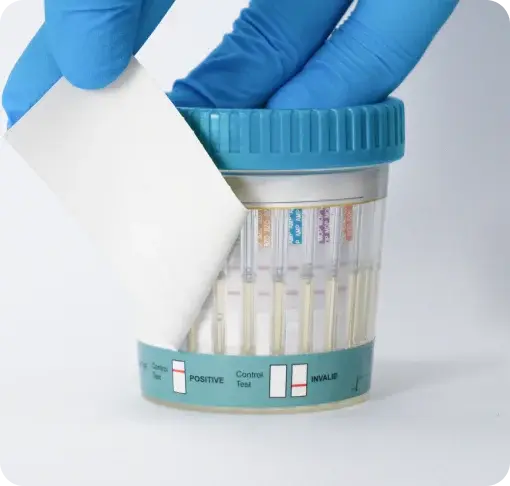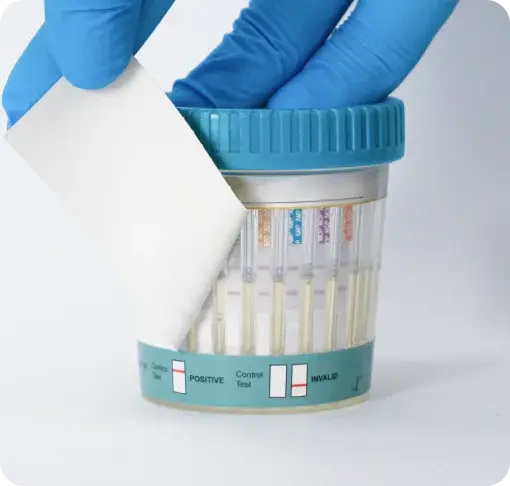A Complete Guide for Employers and Healthcare Providers
Pink Cocaine, often referred to as Tusi, Tucibi, or 2C-B, is an emerging synthetic party drug gaining popularity across Europe and South America. Despite its misleading nickname, Pink Cocaine usually contains no cocaine at all. Instead, it’s a dangerous mix of substances like MDMA, ketamine, LSD, and other stimulants or hallucinogens—making it highly unpredictable and a growing concern in both healthcare and workplace settings.
In this guide, we explore how Pink Cocaine is detected, what it shows up as on a drug test, how long it stays in the body, and how employers and healthcare professionals can respond appropriately to non-negative results.
What Is Pink Cocaine?
Contrary to its name, Pink Cocaine is not a single substance. It's often a brightly coloured powder or pill containing an unregulated blend of psychoactive drugs. While it’s sometimes sold as 2C-B (a synthetic hallucinogen), most “Tusi” or “Tucibi” samples tested in labs contain combinations of:
- MDMA (Ecstasy)
- Ketamine
- Methamphetamine
- Cocaine
- LSD
- Synthetic cathinones ("bath salts")
Street names include:
- Tusi
- Tucibi
- 2C-B (though often misleading)
- Pink Coke
- Pink Molly
- Nexus (occasionally)
Because of its inconsistent composition, Pink Cocaine poses a serious risk of overdose, unexpected side effects, and dangerous interactions with other substances.
Will Pink Cocaine Show Up on a Drug Test?
Yes—but not as "Pink Cocaine." Instead, the individual components it contains may be detected separately depending on the test panel and lab analysis.
For example, Pink Cocaine often shows up under:
- MDMA (Ecstasy)
- KET (Ketamine)
- AMP (Amphetamines or Methamphetamine)
- COC (Cocaine)
- LSD (if specifically tested for)
Since no test detects “Tusi” as a single compound, a multi-panel drug test (e.g. 12-, 14-, or 16-panel) is most effective for detecting its components.
How Long Does Pink Cocaine Stay in the System?
Since Pink Cocaine is a poly-drug mix, detection time varies depending on its components.
| Substance | Urine | Saliva |
| MDMA | 1-5 Days | 1-3 Days |
| Ketamine | 1-14 Days | 1-3 Days |
| Cocaine | 1-5 Days | 1-3 Days |
| Methamphetamine | 1-5 Days | 1-3 Days |
Can a False Positive Happen?
Yes. Due to the complexity of the drug cocktail, false positives may occur in rapid POCT (point-of-care tests). Cross-reactivity is especially common with:
- Certain antidepressants or antihistamines
- Over-the-counter cold meds (e.g., pseudoephedrine)
- ADHD medication (e.g., Adderall)
Confirmatory lab testing using GC-MS or LC-MS is essential to verify non-negative results and rule out sample contamination or misidentification.
What Does Pink Cocaine Look Like on a Drug Test Result?
At AttoSure, Pink Cocaine will not show as “Tusi” or “Tucibi.” Instead, our test panels will flag the individual substances:
- COC for cocaine
- MDMA or AMP for ecstasy/meth
- KET for ketamine
- LSD if present and tested
Any positive result on one or more of these strips would be flagged as non-negative. A healthcare provider or occupational health professional should always follow up with a confirmation test before taking action.
Why Employers and Clinicians Test for Pink Cocaine
Pink Cocaine is especially dangerous due to:
- Its unpredictable mix of psychoactive substances
- Severe mental and physical impairment risks
- High potential for overdose or drug interactions
This makes it a priority concern in:
- Workplace drug and alcohol policies
- Safety-sensitive industries like transport, construction, or healthcare
- Substance misuse programs
- Clinical toxicology and emergency care
Final Thoughts
With no two batches of Pink Cocaine being the same, it poses unique challenges for healthcare and workplace drug testing. However, modern multi-panel drug tests and laboratory confirmation can effectively detect its components—helping clinicians and employers safeguard wellbeing and maintain compliance.
At AttoSure, we offer comprehensive and confidential drug testing services to help you detect complex substances like Pink Cocaine quickly and accurately. Whether you’re in occupational health, HR, or clinical care, our trusted testing solutions support you in addressing drug-related concerns responsibly.
You can also test your knowledge with our expert-designed quizzes tailored for workplace and healthcare settings. We pride ourselves on delivering first-class educational content, created by our team of scientific experts. Browse our selection of quizzes below.
Contact Us



